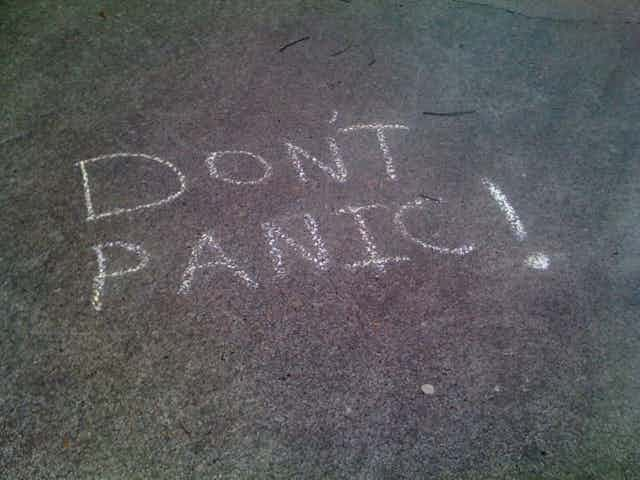Today we worry that cow farts are destroying the environment with methane; back in the Proterozoic, it’s certain that algae farts ruined it with oxygen.
As an evolutionary biologist and conservationist I am accustomed to telling my students that humans are responsible for the sixth mass extinction, which is happening right now.
As we watch extinction rates rise well above background levels, and the number of endangered species increase year by year, I ask my students if they want to live in a world with damaged ecosystems. But I have never asked whether humans will actually be able to survive.
Annalee Newitz has done this in her new book “Scatter, Adapt, and Remember: How humans will survive a mass extinction”. This wide-ranging and engaging book covers the history of our planet, our species and our cities, delves into some serious science fiction and explores strategies for the future. Topics range from the genetics of Neanderthals, the politics of famine, and the psychology of living underground. The personal accounts of conversations with scientists and extensive notes give the book an authority that forces the reader to take seriously ideas that might otherwise seem far-fetched.
The result is a larger view of humanity, embedded in geologic time and explained in terms of our differences from other, earlier humans. Homo sapiens is also not the first creature to pollute the earth in ways that force other species into extinction. Billions of years ago cyanobacteria released oxygen as a result of photosynthesis, and changed the earth’s atmosphere from one dominated by methane to a world of oxygen.
Mass extinctions are defined as an event during which 75% or more of the species become extinct in less than 2 million years. The five mass extinctions that fall into this definition are reviewed by the author in ways that force us to think about the aftermath as well as the cause. In some cases, it took eons to re-establish functioning ecosystems following planetary bio-devastation.
When Newitz brings humans into the picture she begins again in the distant past. Humans have nearly become extinct several times. These events, known as founder events, explain the current low genetic diversity of our species.
The ability of humans to travel, to plan and to share stories is contrasted with our failure to control famine and plagues. Here we learn that political will, rather than scientific knowledge, is the secret to improved survival for many members of our species.
Newitz promotes a pragmatic optimism, a point of view developed during research which convinced her that “humanity has a lot more than a fighting chance at making it for another million years”.
Scatter, adapt and remember are three survival strategies that have worked for people and other species in the past. A personal reflection on the Jewish diaspora, a summary of research on algae as carbon scrubbers and fuel cells, and the migration and survival of endangered Grey Whales summarise these strategies. But stories themselves are part of the story, and the science fiction of Octavia Butler shows that humanity requires constant change to survive.
Building a death-proof city and finding ways to establish human colonies in space are problems with real solutions. Underground cities, green buildings, geo-engineering and space elevators are discussed with experts who are currently exploring and developing such technologies. She even raises the possibility of uploading our consciousness into robot bodies.
Annalee Newitz knows that these ideas sound like science fiction, but her down to earth explanation of them provides reassurance. As she says in her last paragraph: “Things are going to get weird… But don’t worry.”

